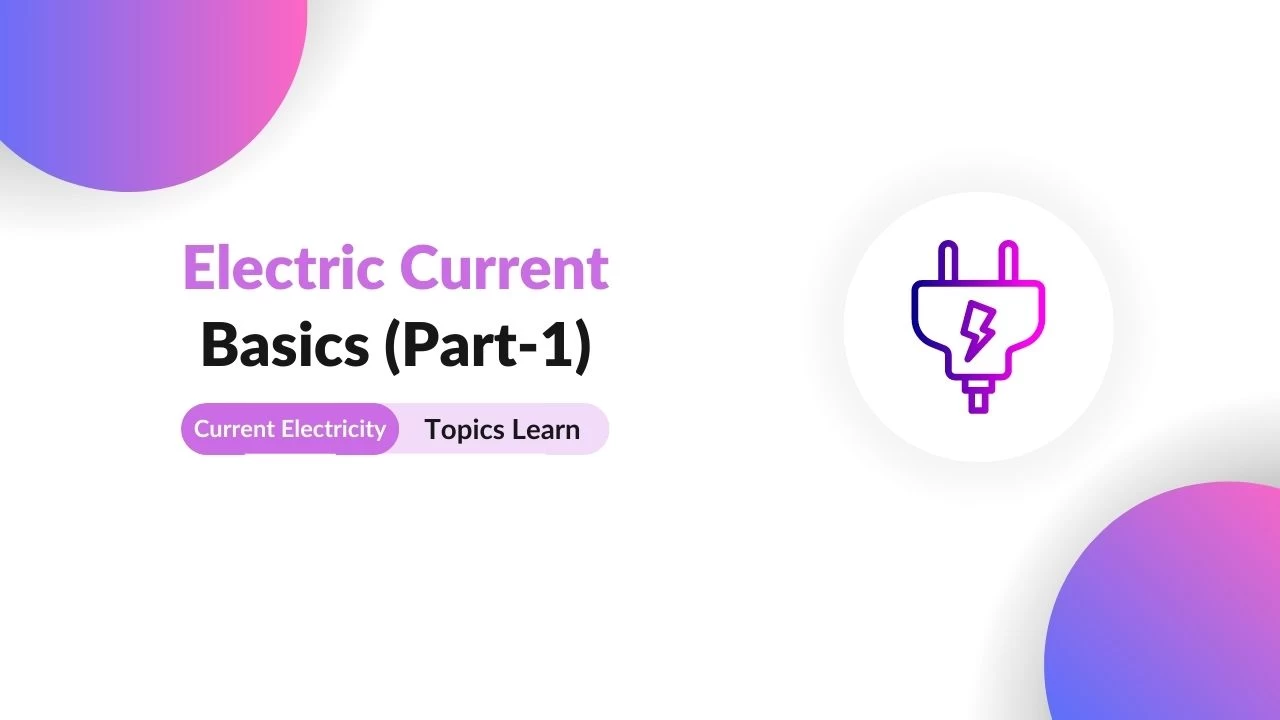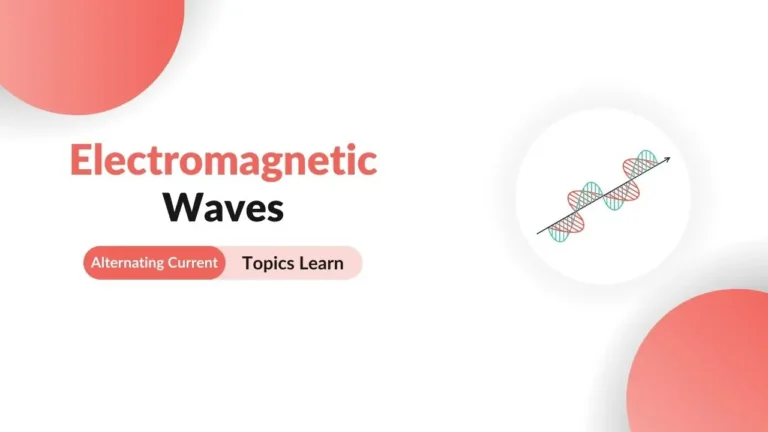The rate of flow of charge is called electric current.
Let ΔQ charge flow across any cross-section of wire in time Δt then the current is:
I=ΔQ/Δt
Unit: SI-Unit of electric current is Ampere.
Ampere: When one coulomb of charge passes through any cross-section of wire in one-second current is one ampere.
1 Ampere = 1 Coulomb/1 Second
Current flows due to the flow of charge carrier:
- In electrolytes, charge carriers are positive and negative ions.
- In gases, charge carriers are electrons and ions.
- In semiconductors, carriers are holes and electrons.
Related material:
- Electric Force vs Gravitational Force
- Applications of Electrostatics
- Geometrical optics Chapter MCQ
- Kirchoff’s Laws
- Rheostat
- Resistivity and its Dependence Upon Temperature
- Ohm’s Law
Current Direction – Electric Current
Conventional Current
The current due to the flow of an equivalent amount of positive charge is called conventional current. This current flows from the positive to the negative terminal. Now it is a convention to take the direction of the current in which positive charge flows.
Electronic Current
The current due to the flow of negative charges (electrons) is called electronic current. It flows from the negative to the positive terminal of the battery.
Current Through Metallic Conductor
In a metal valence electrons are not bound. They are free to move within the conductors. These electrons are called free electrons.
Free electrons are randomly moving when not connected to the battery equal number of electrons move in every direction so the net flow of charge in the wire is zero.
When a conductor is connected to the battery an electric field is set up. The force [vector]F.q[vector]E will act on free electrons and electrons starts moving, acquiring a uniform velocity called Drif velocity.
Drift Velocity
The uniform velocity acquired by the electrons in the presence of the electric field of the battery is called drift velocity.
Drift velocity is of the order of 10-13 ms-1 whereas the velocity of free electrons at room temperature due to thermal motion is several hundred kilometers.
Sources of Current
In order to have a constant current through a conductor, a source of constant potential difference should be maintained across the conductor. This is called the source of current. Some sources of current are listed as follows:
- Cells: Cells are responsible for converting chemical energy into electrical energy.
- Electrical Generator: Mechanical energy is converted into electrical energy by electrical generators.
- Thermocouples: They convert heat energy into electric energy.
- Solar Energy: They convert sunlight directly into electric energy.
Effects of Current
1. Heating Effect
As current flows through a wire due to collision between electrons with atoms of metal, they lose some of their kinetic energy K.E and give it to atoms.
in this way, electrons increase the K.E of atoms. It produces heat in the wire, the heat H produced by the current in the wire of resistance R during the time ‘t’ is
H=I2Rt
Applications: The heating effect is used in electric heaters, kettles, toasters, and iron.
2. Magnetic Effect
When current flows through a write magnetic field is produced. This magnetic field depends upon current I and distance from the conductor. This effect is used in:
- Detection and measurement of current.
- Motors and generators also use this effect.
3. Chemical Effect
The chemical changes produced during the electrolysis of liquid are due to the chemical effect of current. It depends on the nature of the liquid and the amount of current.
Main Parts of Electrolysis:
- Electrode: The material in form of wire or plate which leads the current into or out of the electrolyte is called an electrode. There are two types of electrodes:
- Anode: It is connected to the positive terminal of the battery.
- Cathode: It is connected to the negative terminal of the battery.
- Voltameter: The apparatus consisting of a vessel containing an electrolyte and two electrodes is when CuSO4 is dissolved in water and current is passed through is dissociates into Cu++ and SO4– – ions. Cu++ moves towards the cathode and so the following reaction takes place
Cu++ + 2e– =>> Cu
These are deposited on the cathode plate while SO4- – moves towards the anode. Cu ions from the anode go into the solution as they combine with SO4– – to form CuSo4
Cu++ + SO4– – =>> CuSo4
So the density of the CuSo4 solution remains the same.
Electroplating: The process of coating a thin layer of some expensive metal (gold, silver) on an article of cheap metals is called electroplating.



